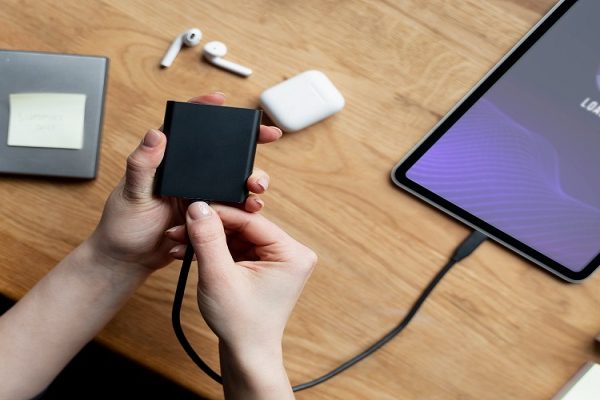Writing a plagiarism-free blog for a blog posting has become more difficult in today’s world, as the usage of the internet and social media platforms becomes more popular with each passing year.
Even the most talented copywriters would find it challenging to develop original content for a blog post in a world where there are over 100 million websites that people visit daily.
If you are a blogger, you have probably heard about the consequences and danger of plagiarism in writing and how it may harm your blog’s reputation. All bloggers must write in a plagiarism-free manner with the help of a plagiarism checker, and this should be reflected in each of your blog articles.
Furthermore, it influences the consistency of your posting. A tiny incident like this might have a negative impact on your overall online reputation as well as the ranking of your blog.
Here we will discuss different tips on generating plagiarism-free content for your blog post. However, before we move ahead, there are a couple of things you need to know:
What does Plagiarized Content mean?
Plagiarism means the act of presenting another person’s work as if it were one’s own without properly recognizing the source. Plagiarism is seen as a kind of dishonesty by many people. We all stand on the shoulders of others, appropriating other people’s labor and passing it off as our own.
In short, the term plagiarism refers to the act of stealing. If you use another writer’s published content on other blogs, without asking him or without permission and giving credit to his name on your blog, you are stealing others’ work.
Plagiarized content: why do people do it?
Almost everyone is aware that using someone else’s material may have serious risks. One of the worst lies an author can tell their readers is to take another author’s ideas and put their own spin on them by rewriting their work. The following are the most common reasons why individuals produce plagiarised content:
The majority of people use copied information in their blog posts because they believe that it will not be detected quickly. When people compose stolen material, they do not want to spend more time on the work at hand. They quickly uncover various internet sites to include the necessary content into their website.
· Insufficiency of time.
People plagiarise because they have inadequate time management skills and cannot concentrate on their tasks. The situation might arise when a person raises the amount of work assigned to writers or pupils to create original material for blogs that are free of plagiarism.
It is likely that the writers may find themselves in a scenario where they will not be able to complete the assignment within the specified time frame. As a result, they pass off someone else’s work as their own without giving credit to the real creator.
· Inactiveness
Imactivemess is another reason for creating plagiarized content. When they are not interested in writing a specific topic for a blog, it is more difficult for them to complete it within the time frame set by their supervisor.
The thought that it is meaningless to do a large amount of work in a short period may occur to them. As a result, they choose to take advantage of other individuals without properly acknowledging them.
· Lack of self-confidence
It is one of the most typical reasons for individuals to plagiarise content. When a blogger or writer doesn’t believe they are up to the work at hand, they may attempt to steal content from other websites to fill the void.
What Effects Can Plagiarized Content Have on Your Blog Post?
When it comes to being a blogger, you may have heard about the negative effects of plagiarism and how it may negatively impact your blog article. In order to prevent such problems, it is essential for all bloggers to practice plagiarism-free writing with a paraphrasing tool, which will help you in writing unique and plagiarism-free content for your blog post. Here we are going to discuss the negative impact of plagiarized content.
- Plagiarized content will have a negative impact on the overall quality of your site.
- Plagiarism will have a bad impact on the search engine optimization of your blog, as well as on the number of visitors and cash you get.
- Writing a plagiarized blog may reduce traffic to your website, but this is better than losing your whole website to the internet.
- With its new rule and regulation policy, Google will either prevent an administrator from writing to a blog for an extended period of time or completely demolish any websites found to be plagiarized.
- Duplicate material is regarded as Blackhat SEO by Google and other search engines, and this will have an adverse effect on your search engine results.
- If you are not at the top of the search results, you will not get any organic visitors.
- Because Google understands how to determine the originality of your post, even if you reword or rewrite the original text, Google will identify this and penalize your website’s search engine rankings.
How to generate plagiarism-free content?

Creating plagiarism-free content is not so easy, but with some tips and tricks, you can easily write a good content without plagiarising for your blog post.
1. Create your own unique content
When it comes to writing blog posts, Comprehensive research is required in order to generate material that is distinct and original. Look for a variety of internet resources, such as blogs and digital libraries, to help you come up with a unique thought around the target term.
Once you have an idea, begin creating a new piece of content that incorporates your thoughts and ideas. Additionally, to avoid copyright concerns, keep the post up to date by adding some extra material accessible on the internet that is connected to the subject.
Understanding the context in which information is being utilized and avoiding changing the general meaning of the problem are two of the most important things to consider while editing information.
2. Use a paraphrasing tool
When you feel difficulty while generating unique content for your blog post, you can get assistance from the paraphraser tool. It is a straightforward method of distinguishing your blog post from the competition.
So, easily you can use a paraphrasing tool to make your content unique. It is an online program that adjusts the words in a piece of writing to make it look unique and separate it from the original source. The most remarkable characteristic of the paraphrasing tool is that it maintains the original meaning while changing the majority of the words.
3. Proper Citation of Sources & add a reference list
Using quotations and repeating the same words from the original text is acceptable if you are unable to paraphrase your content. It comes in handy when you need to reproduce someone else’s exact words in order to give your post more authority.
It is also necessary for copywriters to credit the source of any data they use to support their pieces, such as assumptions or facts. Using quotations and references to protect yourself and your website from being accused of plagiarism may prove to be extremely effective.
Filling your content with quotation marks, on the other hand, will have no effect on your search engine optimization. Strike a balance between original writing and quotes to keep both your audience and the search engines engaged.
Additionally, provide a reference list at the conclusion of the post to offer the viewers all of the relevant information regarding the original material. This will lead the reader to the original source of information, thus avoiding any concerns about copyright violations.
Furthermore, there are a variety of online citation tools accessible on the internet that may make the process of creating accurate citations much simpler.
4. Go to check plagiarism & proofread
Before submitting the blog post for publication, it should go to check plagiarism and proofread your content. Plagiarism may be either deliberate or inadvertent in nature. As a result, always check the post with a plagiarism checker before posting to ensure that it is original and free of plagiarism.
To update an article or blog post, go back and reread the words, assertions, and some of the most significant paragraphs. The writing style and natural flow of the text are also checked throughout this process.
Additionally, proofread the material, verify and correct grammatical and then produce fresh content as needed. If you discover a problem or a mistake in the sentence structure or content, make the necessary modifications to correct it.
You may also keep the material up to date by adding more relevant and valuable information to avoid any potential copyright concerns in the future. And when you notice plagiarism in your content, you can go to check plagiarism.
Use a Plagiarism Checker
After you have paraphrased your text, you should run it through a plagiarism checker to guarantee that it is completely original. Plagiarism checker tool scam your post and evaluate plagiarized content in your content and provide results in percentage.
When using a plagiarism checker, one of the advantages is that it examines the structures and words that are similar to those used by the other author in their work. You will have the opportunity to publish 100 percent original material before it goes public.
Conclusion
As a blogger, it is your duty to provide unique and plagiarism-free material for blogging and to engage the audience. For those of you who are unable to write or who are having problems producing a unique article, use the suggestions provided above to create a plagiarism-free blog for your posting.
Consider that material for a website is required to be free of plagiarism since a single plagiarised blog post or article might lead the whole website to be shut down.
Plagiarism can also lower the rating of your website on the search engine results page (SERP). As a result, use the above-mentioned tips and tricks to easily generate original and plagiarism-free blog posts for your visitors.



